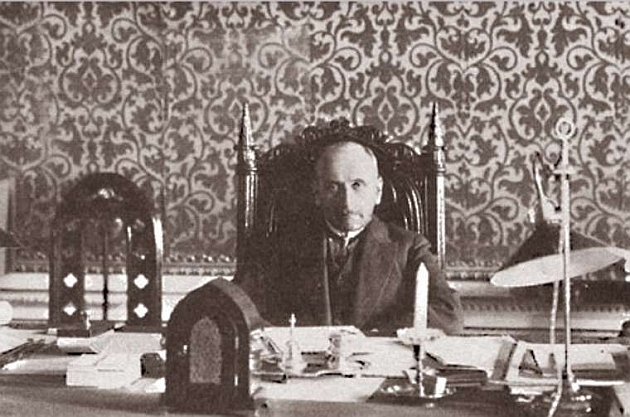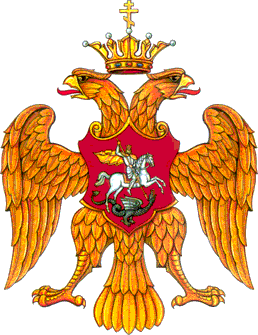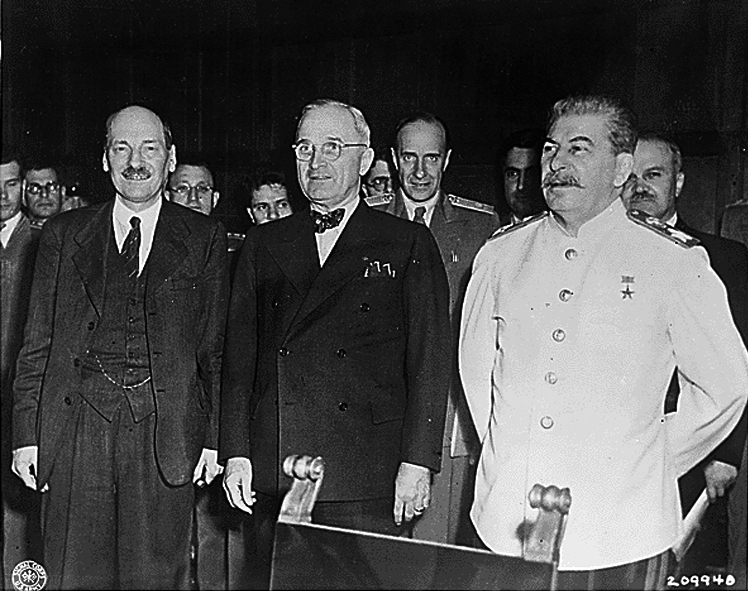|
Sergey Sazonov
Sergei Dmitryevich Sazonov GCB (Russian: Сергей Дмитриевич Сазонов; 10 August 1860 in Ryazan Governorate 11 December 1927) was a Russian statesman and diplomat who served as Foreign Minister from November 1910 to July 1916. The degree of his involvement in the events leading up to the outbreak of World War I is a matter of keen debate, with some historians putting the blame for an early and provocative mobilization squarely on Sazonov's shoulders, and others maintaining that his chief preoccupation was "to reduce the temperature of international relations, especially in the Balkans".John M. Bourne. ''Who's Who in World War One''. Routledge, 2001. . Page 259. Early career Of lesser noble background, Sazonov was the brother-in-law of Prime Minister Pyotr Stolypin, who did his best to further Sazonov's career. Having graduated from the Tsarskoye Selo Lyceum, Sazonov served in the London embassy, and the diplomatic mission to the Vatican, of which he became ... [...More Info...] [...Related Items...] OR: [Wikipedia] [Google] [Baidu] |
Minister Of Foreign Affairs (Russia)
The Minister of Foreign Affairs of the Russian Federation is a high-ranking Russian government official who heads the Ministry of Foreign Affairs (Russia), Ministry of Foreign Affairs of the Russian Federation. The foreign minister is one of the five so-called 'presidential' ministers, along with the ministers of Minister of Defence (Russia), defense, Minister of Internal Affairs (Russia), interior, Minister of Emergency Situations (Russia), emergencies and Ministry of Justice (Russia), justice. Although they are members of the Government of Russia#Current Cabinet, Cabinet, they are directly subordinate to the President of Russia, President. The foreign minister, like other presidential ministers, is nominated and appointed by the President after consultation with the Federation Council (Russia), Federation Council (whereas non-presidential ministers are nominated by the Prime Minister of Russia, Prime Minister and appointed by the President after approval by the State Duma). Th ... [...More Info...] [...Related Items...] OR: [Wikipedia] [Google] [Baidu] |
Balkans
The Balkans ( ), also known as the Balkan Peninsula, is a geographical area in southeastern Europe with various geographical and historical definitions. The region takes its name from the Balkan Mountains that stretch throughout the whole of Bulgaria. The Balkan Peninsula is bordered by the Adriatic Sea in the northwest, the Ionian Sea in the southwest, the Aegean Sea in the south, the Turkish Straits in the east, and the Black Sea in the northeast. The northern border of the peninsula is variously defined. The highest point of the Balkans is Mount Musala, , in the Rila mountain range, Bulgaria. The concept of the Balkan Peninsula was created by the German geographer August Zeune in 1808, who mistakenly considered the Balkan Mountains the dominant mountain system of Southeast Europe spanning from the Adriatic Sea to the Black Sea. The term ''Balkan Peninsula'' was a synonym for Rumelia in the 19th century, the European provinces of the Ottoman Empire. It had a ge ... [...More Info...] [...Related Items...] OR: [Wikipedia] [Google] [Baidu] |
Morgan Shuster
William Morgan Shuster (23 February 1877 in Washington, D.C. – 26 May 1960 in New York City), was an American lawyer, civil servant, and publisher, who is best known as the treasurer-general of Persia by appointment of the Iranian parliament, or Majles, from May to December 1911. Background Shuster was born in Washington, D.C. and educated in the Columbian University and Law School. After graduation, Shuster became a customs collector for the U.S. government, serving in the United States Military Government in Cuba in 1899 following the Spanish–American War, and in the Philippines, which was at that time an American colony. In 1906 he was appointed Secretary of Public Instruction in the Insular Government of the Philippine Islands and a member of the Philippine Commission. In Iran In 1906, the Constitutional Revolution of Iran sought to establish a Western-oriented, democratic civil society in Iran, then known as Persia to the outside world. The movement forced the Shah ... [...More Info...] [...Related Items...] OR: [Wikipedia] [Google] [Baidu] |
Potsdam Agreement (1911)
The Potsdam Agreement (german: Potsdamer Abkommen) was the agreement between three of the Allies of World War II: the United Kingdom, the United States, and the Soviet Union after the war ended in Europe on 1 August 1945 and it was published the next day. A product of the Potsdam Conference, it concerned the military occupation and reconstruction of Germany, its border, and the entire European Theatre of War territory. It also addressed Germany's demilitarisation, reparations, the prosecution of war criminals and the mass expulsion of ethnic Germans from various parts of Europe. France was not invited to the conference but formally remained one of the powers occupying Germany. Executed as a communiqué, the agreement was not a peace treaty according to international law, although it created accomplished facts. It was superseded by the Treaty on the Final Settlement with Respect to Germany signed on 12 September 1990. As De Gaulle had not been invited to the Conference, the F ... [...More Info...] [...Related Items...] OR: [Wikipedia] [Google] [Baidu] |
Khanaqin
Khanaqin ( ar, خانقين; ku, خانەقین, translit=Xaneqîn) is the central city of Khanaqin District in Diyala Governorate, Iraq, near the Iranian border (8 km) on the Alwand tributary of the Diyala River. The town is populated by Kurds who speak the Southern Kurdish dialect. Khanaqin is situated on the main road which Shia pilgrims use when visiting holy Islamic cities. The city is moreover rich in oil and the first Iraqi oil refinery and oil pipeline was built nearby in 1927. The main tribes of Khanaqin include Kalhor, Feyli, Zand, Malekshahi Suramiri, Arkavazi and Zangana. The city experienced Arabization during the Saddam era, but this has been substantially reversed after the fall of the regime in 2003 and remains disputed. History During the Sassanids Khanaqin was part of Khosrow shadpiruz province. In the early 11th century, the city was under the Banu Uqayl and later the Annazids until Ibrahim Inal captured the city around 1045. Khanaqin was p ... [...More Info...] [...Related Items...] OR: [Wikipedia] [Google] [Baidu] |
Tehran
Tehran (; fa, تهران ) is the largest city in Tehran Province and the capital of Iran. With a population of around 9 million in the city and around 16 million in the larger metropolitan area of Greater Tehran, Tehran is the most populous city in Iran and Western Asia, and has the second-largest metropolitan area in the Middle East, after Cairo. It is ranked 24th in the world by metropolitan area population. In the Classical era, part of the territory of present-day Tehran was occupied by Rhages, a prominent Median city destroyed in the medieval Arab, Turkic, and Mongol invasions. Modern Ray is an urban area absorbed into the metropolitan area of Greater Tehran. Tehran was first chosen as the capital of Iran by Agha Mohammad Khan of the Qajar dynasty in 1786, because of its proximity to Iran's territories in the Caucasus, then separated from Iran in the Russo-Iranian Wars, to avoid the vying factions of the previously ruling Iranian dynasties. The capital has been ... [...More Info...] [...Related Items...] OR: [Wikipedia] [Google] [Baidu] |
Persian Constitutional Revolution
The Persian Constitutional Revolution ( fa, مشروطیت, Mashrūtiyyat, or ''Enghelāb-e Mashrūteh''), also known as the Constitutional Revolution of Iran, took place between 1905 and 1911. The revolution led to the establishment of a parliament in Persia (Iran) during the Qajar dynasty. The revolution opened the way for fundamental change in Persia, heralding the modern era. It was a period of unprecedented debate in a burgeoning press, and new economic opportunities. Many groups fought to shape the course of the revolution, and all segments of society were in some way changed by it. The old order, which King Nassereddin Shah Qajar had struggled for so long to sustain, was finally replaced by new institutions, new forms of expression, and a new social and political order. King Mozaffar ad-Din Shah Qajar signed the 1906 constitution shortly before his death. He was succeeded by Mohammad Ali Shah, who abolished the constitution and bombarded the parliament in 1908 with R ... [...More Info...] [...Related Items...] OR: [Wikipedia] [Google] [Baidu] |
Fertile Crescent
The Fertile Crescent ( ar, الهلال الخصيب) is a crescent-shaped region in the Middle East, spanning modern-day Iraq, Syria, Lebanon, Israel, Palestine and Jordan, together with the northern region of Kuwait, southeastern region of Turkey and the western portion of Iran. Some authors also include Cyprus and Northern Egypt. The Fertile Crescent is believed to be the very first region where settled farming emerged as people started the process of clearance and modification of natural vegetation to grow newly domesticated plants as crops. Early human civilizations such as Sumer in Mesopotamia flourished as a result. Technological advances in the region include the development of agriculture and the use of irrigation, of writing, the wheel, and glass, most emerging first in Mesopotamia. Terminology The term "Fertile Crescent" was popularized by archaeologist James Henry Breasted in ''Outlines of European History'' (1914) and ''Ancient Times, A History of the Early W ... [...More Info...] [...Related Items...] OR: [Wikipedia] [Google] [Baidu] |
Baghdad Railway
Baghdad (; ar, بَغْدَاد , ) is the capital of Iraq and the second-largest city in the Arab world after Cairo. It is located on the Tigris near the ruins of the ancient city of Babylon and the Sassanid Persian capital of Ctesiphon. In 762 CE, Baghdad was chosen as the capital of the Abbasid Caliphate, and became its most notable major development project. Within a short time, the city evolved into a significant cultural, commercial, and intellectual center of the Muslim world. This, in addition to housing several key academic institutions, including the House of Wisdom, as well as a multiethnic and multi-religious environment, garnered it a worldwide reputation as the "Center of Learning". Baghdad was the largest city in the world for much of the Abbasid era during the Islamic Golden Age, peaking at a population of more than a million. The city was largely destroyed at the hands of the Mongol Empire in 1258, resulting in a decline that would linger through many ... [...More Info...] [...Related Items...] OR: [Wikipedia] [Google] [Baidu] |
Détente
Détente (, French: "relaxation") is the relaxation of strained relations, especially political ones, through verbal communication. The term, in diplomacy, originates from around 1912, when France and Germany tried unsuccessfully to reduce tensions. The term is often used to refer to a period of general easing of the geopolitical tensions between the Soviet Union and the United States during the Cold War. It began in 1969, as a core element of the foreign policy of US President Richard Nixon, in an effort to avoid nuclear escalation. The Nixon administration promoted greater dialogue with the Soviet government, including regular summit meetings and negotiations over arms control and other bilateral agreements. Détente was known in Russian as разрядка (''razryadka''), loosely meaning "relaxation of tension". Summary of Cold War détente The period was characterized by the signing of treaties such as SALT I and the Helsinki Accords. Another treaty, SALT II, was dis ... [...More Info...] [...Related Items...] OR: [Wikipedia] [Google] [Baidu] |
Edward Grey, 1st Viscount Grey Of Fallodon
Edward Grey, 1st Viscount Grey of Fallodon, (25 April 1862 – 7 September 1933), better known as Sir Edward Grey, was a British Liberal statesman and the main force behind British foreign policy in the era of the First World War. An adherent of the " New Liberalism", he served as foreign secretary from 1905 to 1916, the longest continuous tenure of any holder of that office. He renewed the 1902 alliance with Japan in 1911. The centrepiece of his policy was the defence of France against German aggression, while avoiding a binding alliance with Paris. He supported France in the Moroccan crises of 1905 and 1911. Another major achievement was the Anglo-Russian entente of 1907. He resolved an outstanding conflict with Germany over the Baghdad railway in 1913. His most important action came in the July Crisis in 1914, when he led Britain into World War I against Germany. He convinced the Liberal cabinet that Britain had an obligation and was honour-bound to defend France, and pre ... [...More Info...] [...Related Items...] OR: [Wikipedia] [Google] [Baidu] |









